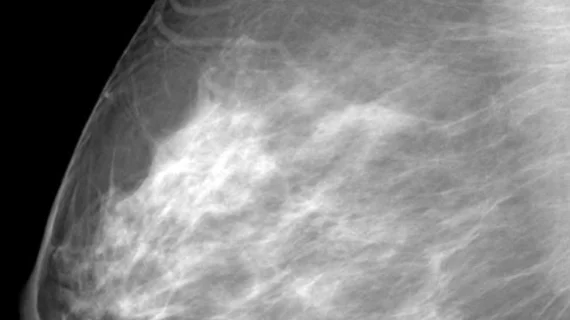Longitudinal changes in breast density could be linked to breast cancer risk
Baseline breast density assessment could serve as a longitudinal tool for evaluating breast cancer risk as women age, according to new work published in Radiology.
The new study revealed that women who exhibited increases in breast density on biennial mammograms subsequent to what was visualized on their baseline imaging were found to have increased risks of developing breast cancer [1]. Basically, when breast density increases, so too does a woman’s cancer risk, regardless of her age, the authors explained.
“Considering that mammographic density can be attributed to the ratio of fibroglandular tissue, which is dependent on the hormonal environment of a woman, any changes in breast density reflect changes in the hormonal environment, which is linked to breast cancer risk.” Dr. Masako Kataoka, a lecturer in diagnostic imaging and nuclear medicine, and chief of breast imaging at Kyoto University Graduate School of Medicine in Japan, wrote in an accompanying opinion piece [2].
A strength of the new research is its large cohort—cases from the Korean National Health Insurance Service database containing imaging of more than 2 million women with multiple screening mammograms were available for researchers to analyze. In total, 22,439 cancers were detected, giving the researchers ample data to pinpoint characteristics associated with breast cancer risk.
Researchers found that cancer risk in premenopausal women with fatty breasts at initial imaging nearly doubled if an increase in density was observed during their second and third mammograms. However, as breast density decreased in women who presented with notable density at their first mammogram, the risk of developing cancer also decreased (0.62-fold lower risk). These findings were consistent in both pre and postmenopausal women.
“The results support the importance of baseline density and the changing patterns of future breast cancer risk over time,” Kataoka said, adding that the results of this study offer evidence that longitudinal breast density changes could potentially be used to personalize risk prediction.
To view the study abstract, click here.
To view Dr. Masako Kataoka’s editorial, click here.

